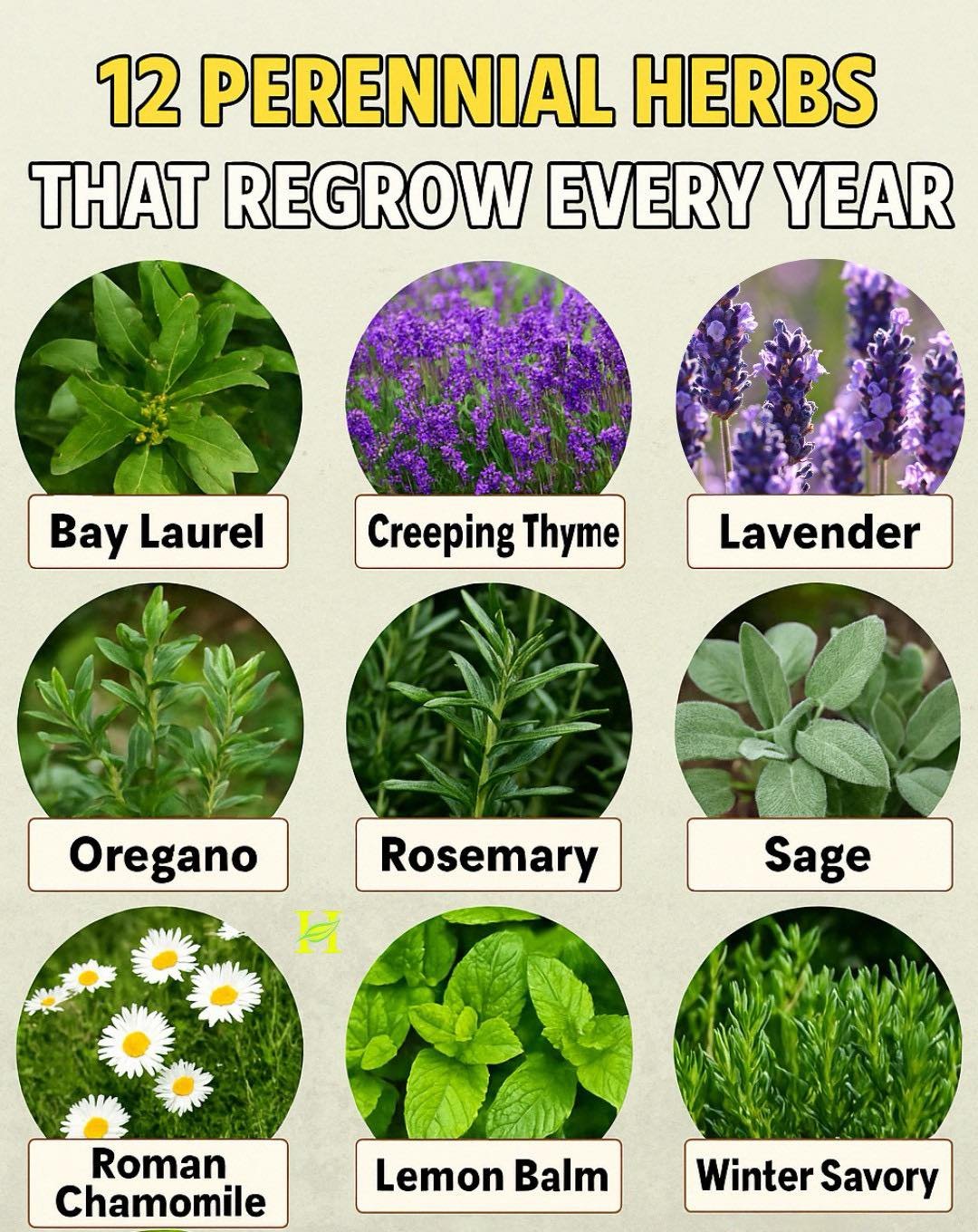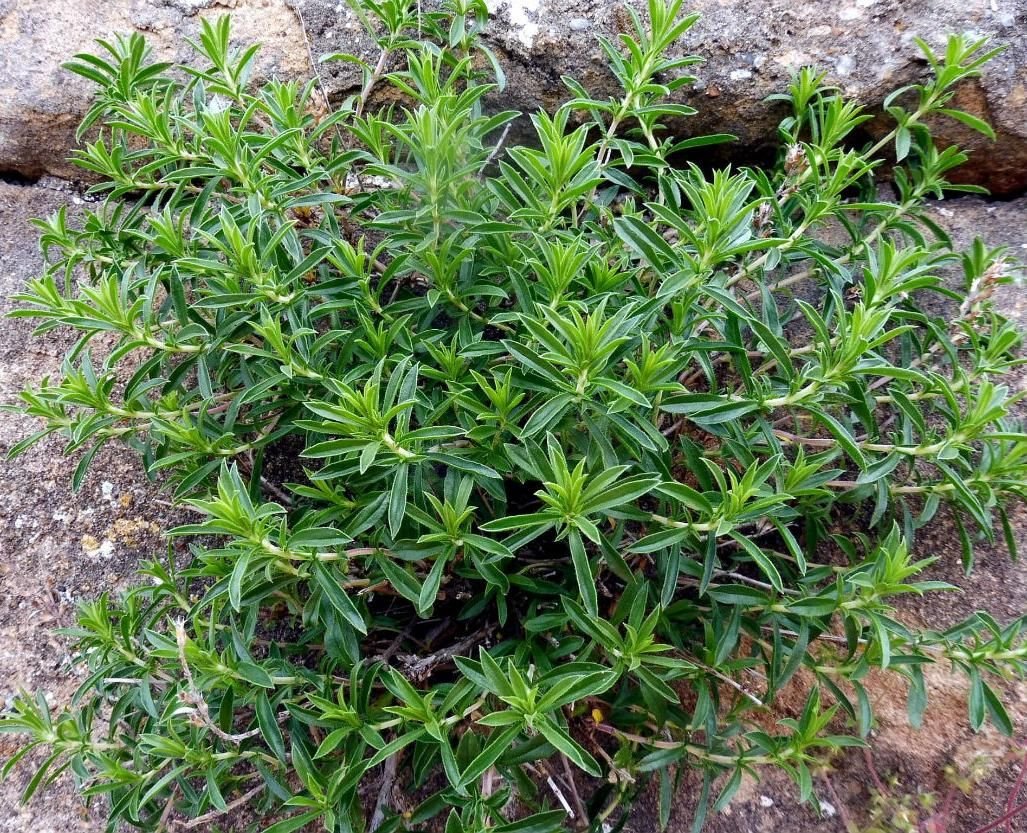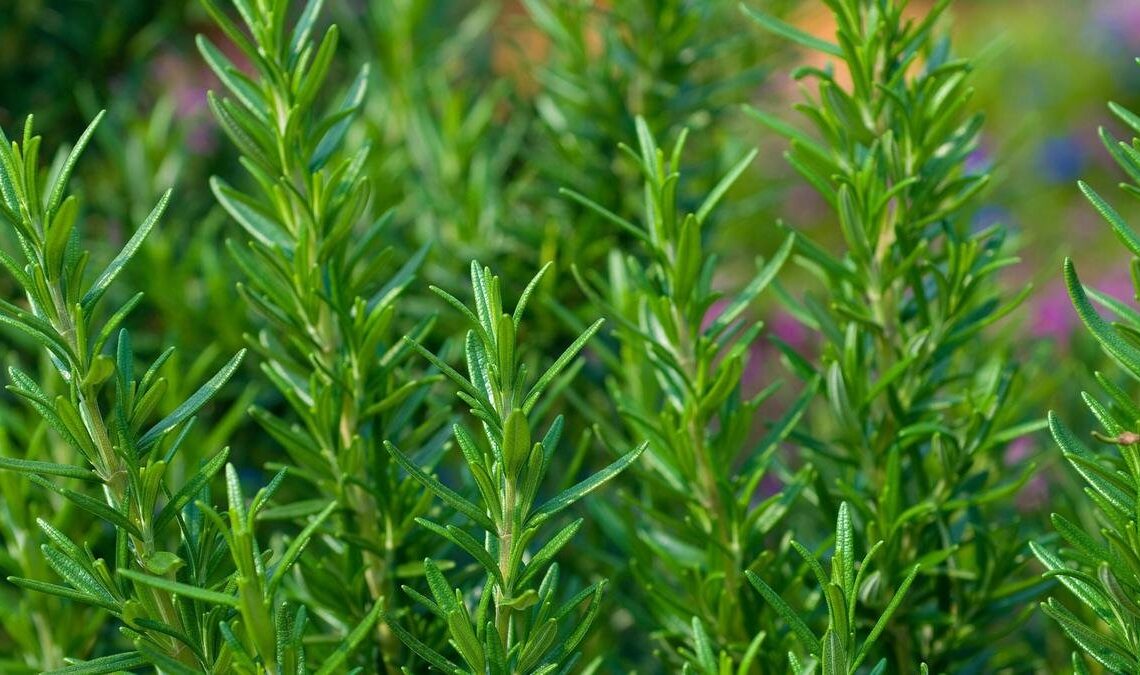As a gardener, there’s nothing more satisfying than planting something once and being able to enjoy it year after year. **Perennial herbs** offer just that: a chance to plant your favorite herbs once and watch them thrive season after season, producing fresh leaves and aromatic flavors.

Whether you have a large garden or a small balcony, perennial herbs are perfect for any space. From culinary use to medicinal benefits, these herbs serve multiple purposes. In this guide, we’ll explore **15 perennial herbs** that are easy to grow, where to plant them, and how to use them in your kitchen and beyond.
## **1. Lavender (Lavandula)**
### How to Grow:
Lavender thrives in **well-drained, sandy soil** and **full sunlight**. Plant it in a sunny spot with good air circulation to avoid mildew.

### Where to Plant:
– Plant lavender in **herb gardens**, containers, or along **garden edges**.
– It loves warm climates and dry conditions.
### Uses:
## **2. Thyme (Thymus vulgaris)**
### How to Grow:
Thyme grows best in **well-drained, slightly alkaline soil**. It prefers **full sun** and doesn’t require much watering once established.
### Where to Plant:

– Perfect for **rock gardens**, **border edges**, or **raised beds**.
– Thyme can also be grown in containers.
### Uses:
– **Culinary**: A staple in Mediterranean cuisine, thyme is used in soups, stews, and marinades.
– **Beyond the Kitchen**: It has antibacterial properties and can be used in herbal teas for respiratory health.
## **3. Mint (Mentha)**
### How to Grow:
Mint grows easily in moist, **well-drained soil**. However, it can become invasive, so plant it in containers or use barriers to control its spread.
### Where to Plant:
– Ideal for **containers** or **herb gardens**.
– Mint thrives in **partial shade**.
### Uses:
– **Culinary**: Great for drinks (like mojitos), salads, or in sauces.
– **Beyond the Kitchen**: Mint oil is commonly used for headaches and indigestion. It’s also an excellent insect repellent.
## **4. Oregano (Origanum vulgare)**
### How to Grow:
Oregano prefers **dry, well-drained soil** and **full sun**. It’s drought-tolerant once established.
### Where to Plant:
– Ideal for **sunny herb gardens** or **containers**.
### Uses:
– **Culinary**: Essential in Italian and Greek dishes, particularly in pasta sauces, pizzas, and salads.
– **Beyond the Kitchen**: Oregano has anti-inflammatory and antimicrobial properties and can be used in herbal teas.
## **5. Sage (Salvia officinalis)**
### How to Grow:
Sage thrives in **well-drained, dry soil** and **full sun**. It’s drought-tolerant and doesn’t require much care once established.
### Where to Plant:
– Perfect for **medicinal herb gardens**, **rock gardens**, or **borders**.
### Uses:
– **Culinary**: Ideal for stuffing, roasted meats, or as a garnish in sauces.
– **Beyond the Kitchen**: Sage is often used in teas for its anti-inflammatory properties and can help soothe sore throats.
## **6. Chives (Allium schoenoprasum)**
### How to Grow:
Chives thrive in **moist, well-drained soil** and **full sun**. They are hardy and easy to grow.
### Where to Plant:
– Plant in **herb gardens** or **containers**.
### Uses:
– **Culinary**: Great for garnishes, salads, and as a seasoning for eggs and potatoes.
– **Beyond the Kitchen**: Chives have a mild antibacterial effect and are often used in home remedies for digestion.
## **7. Rosemary (Rosmarinus officinalis)**
### How to Grow:
Rosemary prefers **well-drained, slightly acidic soil** and **full sun**. It’s drought-tolerant once established.
### Where to Plant:
– Ideal for **sunny garden beds** or **containers**.
– Rosemary makes a beautiful addition to ornamental gardens.
### Uses:
– **Culinary**: Perfect for roasting meats, potatoes, or adding to sauces and soups.
– **Beyond the Kitchen**: Rosemary is used for improving memory, hair growth, and has antioxidant properties.
## **8. Tarragon (Artemisia dracunculus)**
### How to Grow:
Tarragon prefers **well-drained, slightly acidic soil** and full sun. It grows best in **moderate climates**.
### Where to Plant:
– Ideal for **herb gardens** and **containers**.
– Tarragon prefers **lightly sheltered areas**.
### Uses:
– **Culinary**: Essential in French cuisine, used in béarnaise sauce, salad dressings, and with chicken or fish.
– **Beyond the Kitchen**: Tarragon has digestive properties and can be used in teas to alleviate indigestion.
## **9. Lemon Balm (Melissa officinalis)**
### How to Grow:
Lemon balm prefers **rich, moist soil** and **partial shade**. It’s easy to grow and self-propagates.
### Where to Plant:
– Great for **shady spots**, **herb gardens**, or **containers**.
### Uses:
– **Culinary**: Used to flavor drinks, salads, and desserts.
– **Beyond the Kitchen**: Known for its calming properties, lemon balm can be used in teas to reduce anxiety and promote relaxation.
## **10. Fennel (Foeniculum vulgare)**
### How to Grow:
Fennel grows best in **well-drained, fertile soil** and **full sun**. It’s drought-tolerant once established.
### Where to Plant:
– Ideal for **medicinal gardens** or **flower gardens**.
– It also works well in **raised beds**.
### Uses:
– **Culinary**: Used in salads, as a garnish, or in roasted dishes.
– **Beyond the Kitchen**: Fennel aids digestion and can be used in teas to relieve bloating.
## **11. Parsley (Petroselinum crispum)**
### How to Grow:
Parsley prefers **moist, well-drained soil** and **partial shade**. It’s easy to grow and needs regular watering.
### Where to Plant:
– Plant in **herb gardens**, **containers**, or **window boxes**.
### Uses:
– **Culinary**: Commonly used as a garnish or in sauces like chimichurri.
– **Beyond the Kitchen**: Parsley is rich in vitamins and can aid in digestion and kidney health.
## **12. Marjoram (Origanum majorana)**
### How to Grow:
Marjoram thrives in **well-drained, dry soil** and **full sun**. It’s hardy and low-maintenance.
### Where to Plant:
– Perfect for **sunny herb gardens** or **raised beds**.
### Uses:
– **Culinary**: Commonly used in Mediterranean dishes, soups, and meats.
– **Beyond the Kitchen**: Marjoram has mild sedative properties and can be used in teas to alleviate stress and promote sleep.
## **13. Echinacea (Echinacea purpurea)**
### How to Grow:
Echinacea prefers **well-drained, fertile soil** and **full sun**. It’s drought-tolerant and hardy.
### Where to Plant:
– Ideal for **flower beds** or **herb gardens**.
### Uses:
– **Culinary**: Can be used in herbal teas and tinctures.
– **Beyond the Kitchen**: Known for boosting the immune system, echinacea is often used to fight off colds and flu.
## **14. Sorrel (Rumex acetosa)**
### How to Grow:
Sorrel prefers **moist, well-drained soil** and **full sun**. It grows quickly and requires regular harvesting.
### Where to Plant:
– Great for **herb gardens** or **raised beds**.
### Uses:
– **Culinary**: Sorrel has a tart, lemony flavor that’s perfect for salads, soups, or sauces.
– **Beyond the Kitchen**: Sorrel has a high vitamin C content and can help with digestion and liver health.
## **15. Lovage (Levisticum officinale)**
### How to Grow:
Lovage grows best in **moist, well-drained soil** and **partial to full sun**.
### Where to Plant:
– Ideal for **herb gardens** or **containers**.
### Uses:
– **Culinary**: Often used in soups, salads, and sauces as a substitute for celery.
– **Beyond the Kitchen**: Lovage aids in digestion and can be used in teas for its anti-inflammatory properties.
## **Plant Once, Enjoy for Years**
Perennial herbs are the perfect choice for anyone looking to add flavor, aroma, and health benefits to their garden. By planting these **15 herbs**, you’re not only saving time and money but also creating a sustainable garden that yields fresh produce season after season.
Whether you’re a seasoned gardener or just starting, these perennial herbs will make your garden thrive—and your kitchen flourish. Plant once, enjoy for years
